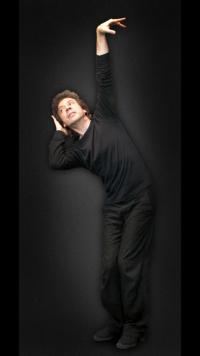Choreographic Phrase, Choreographic Thought
The All-Russian competition for ballet artists in the category of contemporary choreography in musical theater has concluded. I was fortunate to once again serve on the jury. First and foremost, I want to say that despite the complexity of this category, the jury worked very harmoniously and without any significant disagreements.
The competition is highly relevant, important, and very challenging. Contemporary choreography and its execution in musical theater spark a lot of debates but rarely please either the audience or professionals. Attempting to explore these topics usually either creates factions or turns into a formality where no one wants to speak honestly, let alone listen to the other side. I tried to clearly articulate some of my thoughts during the discussion on contemporary choreography at a roundtable held as part of the competition program.
Lately, I often find myself in conversations where, after expressing my opinion that I did not like a particular production, I receive reactions like: “What?! But it’s very good, everyone says so! It’s trendy now! You’re out of touch.” The response to my counter-question — did my discussants enjoy the production? — is alarming: “Not entirely clear. A bit boring. But we don’t want to seem out of touch.”
It inevitably brings to mind the story of “The Emperor’s New Clothes.” But is the emperor really naked? Or are we simply avoiding a truthful assessment of the development of contemporary choreography and its evolution in the process of training both choreographers and performers? Are we overlooking the interesting and talented young individuals?
Let’s take it step by step. Let’s return to the competition.
Contemporary choreography in musical theater. What do we mean by ‘musical theater’? Choreographers and artists working in opera and ballet theaters or similar ‘academic’ repertoire musical theaters typically see it primarily as a direction for theatrical ballet performances. Colleagues in more chamber ensembles, or, as often referred to, modern dance troupes, are captivated by performances that are more rigidly directed towards execution in the style and technique of modern dance.
Contemporary choreography. Can the term “contemporary” alone define what it encompasses? Every choreographer creating today is doing something contemporary, aren’t they? The question is: what are their dance means of expression? What is their choreographic language?
Contemporary choreography. Can the term “contemporary” alone define what it encompasses? Every choreographer creating today is doing something contemporary, aren’t they? The question is: what are their means of expression? What is their choreographic language?
Dance is a language. A language through which emotional expression is conveyed via movement. If the emotion is understandable to the audience, it captivates and conveys either a story or a momentary mood. And that is interesting. But if it is merely a set of movements, often not even matching the music, then even with excellent execution, it becomes, pardon the expression, choreographic gibberish. Just as a collection of even the most beautiful words and phrases in any language. But we want to hear. To hear with our eyes a sonnet, if it’s a moment, to feel and understand a story if such is intended in the choreography.
is intended in the choreography.
Therefore, we need to see a choreographic phrase filled with thought.
Choreographic phrase. Choreographic thought. I love these definitions. Primarily because I am in love with dance, with ballet. With its ability to convey both the states of brief moods and a narrative story – a large ballet production.
Theater either exists or it does not. If there is no emotional connection with the audience, if we merely admire the technical capabilities of an athlete-dancer or the beauty of a performer’s body, it is still not theater. It is only the compelling choreographic thought that allows dancers to captivate, leading us to follow the unfolding emotional flow. There is no need to debate whether these performers belong to an opera and ballet theater or a modern dance ensemble, or whether it is trendy or a relic of the ‘Soviet era.
I stand for theater. Ballet theater. Dance theater.
But this raises another question – the question of training performers and choreographers for the contemporary choreographic theater. But not all at once. Until we meet again!
© Konstantin Uralsky
